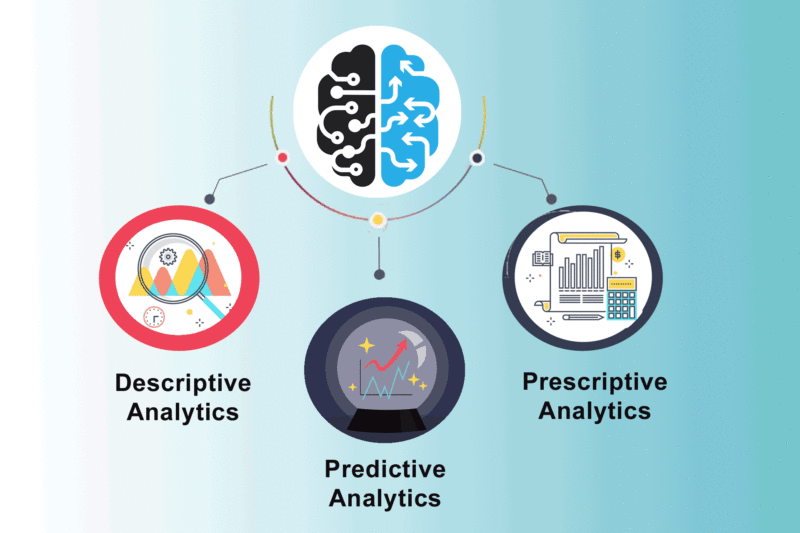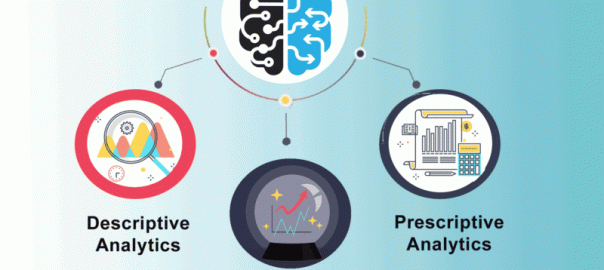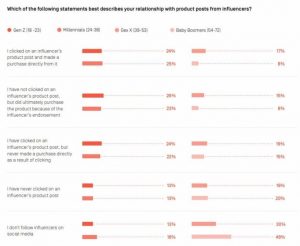In this age of big data, marketers can’t afford to be analytics-agnostic. To be an AI-driven organization, the marketing team needs to rethink data and analytics.

Big data is at the core of algorithms that power artificial intelligence. From machine learning algorithms to predictive modeling, artificial intelligence is trained to scour big data to look for patterns and establish a correlation between variables.
The AI algorithms that make the highest level of personalization possible for marketers aren’t crystal-ball magic but are driven by big-data analytics.
Today, e-commerce marketers are getting overwhelmed by tons of data generated every second. And to extract meaningful insights out of this data maze, marketers need to have a proper analytics framework in place.
Without analytics, it will be hard to assess the outcome of any artificial intelligence system. So, here are three ways to tap into and analyze your data to implement AI successfully.
1. Descriptive analytics: Think customer, not data points
Understanding your customer is crucial for delivering intelligent insights. But most marketers are still using multiple-marketing tools, resulting in huge data gaps.
To truly understand your customer, you need to have a transparent picture of how your customers interact with you across channels. Single customer view is the profiling that’s at the core of all AI efforts.
Once you have a single customer view that has every piece of information, from demographic (such as gender, age, income) to actionable insights (products browsed, purchased, abandoned), machine learning algorithms will feed on this data to get the deepest insights about your customers.
2. Predictive analytics: Deciphering insights from hindsight
When it comes to forecasting the future, predictive modeling relies on historical (descriptive) analytics to find patterns and form probabilities. Recommendations work on this logic to send personalized offers to individual customers, for instance.
But there’s more to prediction than recommendations. For example, predicting what percentage/lifecycle of customers will purchase without a discount or which segment of people will only buy discounted products — such predictions are leveraged through analytics.
But key metrics are not the same for every business, even in the same industry. So, for AI to give you the right predictions, descriptive visualization alone won’t help in recognizing hidden patterns in the data.
As per a VB Insights report on how marketers were spending their time generating analytics reports, 38 percent said they felt comfortable reporting on the past, 35 percent analyzed the present, while just 27 percent focused on predicting the future.
So, it’s important to choose a marketing automation platform that won’t just provide metrics, but will empower the marketing teams to ask the questions that matter and generate dashboards on the fly for intelligent reporting.
3. Prescriptive analytics: Tying analytics to decision-making
Prescriptive analytics is relatively new but has a promising future. The goal of prescriptive analytics is to suggest actions to achieve the predicted outcome.
Most marketers rely on descriptive analytics for basic predictions, but prescriptive analytics relies on advanced statistical modeling to leverage data for actionable insights. For example, what’s the right discount to offer to a customer segment?
Currently, 10 percent of companies are using some form of prescriptive analytics in their business, according to Gartner.
Lay the right foundation
These strategic steps are key to laying the foundation of AI-driven marketing. But, before you start your analytical journey, here are few basic rules to make sure your big data is reliable:
- Overcome your confirmation bias. Faulty assumptions lead to a poor strategy. It’s imperative to test your hypothesis. For example, an observation of an increase in email opens can show an improvement with offering discounts, but testing the hypothesis can reveal that the increase was partially due to send time optimization.
- Ask the right questions. Every marketer has a different set of challenges to deal with. Machine learning and AI predictions will only be able to make the right predictions if the marketing KPIs are in place.
- Struggling with data black boxes is no longer a valid excuse. Choose a marketing automation platform that offers a holistic customer profile by integrating data from various sources.
Your AI predictions are only as good as the analytics framework it relies on. So, it’s crucial for marketers to master the basics of analytics to avoid making poor decisions when using AI technologies.
Some opinions expressed in this article may be those of a guest author and not necessarily Marketing Land. Staff authors are listed here.
Marketing Land – Internet Marketing News, Strategies & Tips
(80)
Report Post








